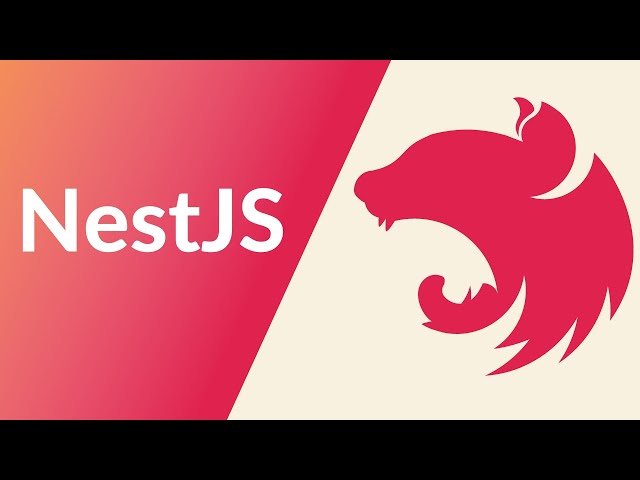Introduction
In the realm of web development, choosing the right framework can significantly impact the success and efficiency of your project. Among the myriad options available, Next.js and Nest.js stand out as formidable contenders, each offering unique strengths and capabilities. Next.js, renowned for its frontend-centric approach and seamless integration with React, excels in server-side rendering and static site generation. On the other hand, Nest.js, inspired by Angular and built on Node.js, prioritizes scalability, modularity, and maintainability for building robust server-side applications.
In this guide, we’ll delve into the features, use cases, and considerations of Next.js and Nest.js to help you make an informed decision tailored to your project’s requirements.
Next JS VS Nest JS: Which Is More Preferable?
In the fast-paced world of web development, choosing the right framework can be crucial to the success of your project. With a myriad of options available, it’s essential to carefully evaluate the features, strengths, and use cases of each framework.
In this comprehensive guide, we’ll delve into Next.js and Nest.js, two popular frameworks in the JavaScript ecosystem, to help you make an informed decision tailored to your project’s requirements.
Introduction to Next.js and Nest.js
Next.js and Nest.js are both powerful frameworks, but they cater to different aspects of web development. Let’s start by understanding each framework’s core features and strengths.
Next.js
Next.js is a React framework renowned for its versatility in building server-rendered and statically-generated applications. With features like automatic code splitting, hot module replacement, and server-side rendering out of the box, Next.js provides a streamlined developer experience. One can join the Next Js Course to learn more about this framework.
Key Features of Next.js
· Server-side Rendering (SSR): Next.js excels in SSR, rendering pages on the server and sending fully-rendered pages to the client. This enhances performance and search engine optimization (SEO).
· Static Site Generation (SSG): It supports SSG, where pages can be pre-built at build time, resulting in faster page loads and reduced server load.
· TypeScript Support: Next.js offers excellent TypeScript support, enabling developers to write type-safe code seamlessly.
· Automatic Code Splitting: It automatically splits code for faster page loads by sending only essential JavaScript code to the client.
· API Routes: Next.js allows you to create API routes effortlessly, simplifying backend development.
Nest.js
Nest.js, on the other hand, is a progressive Node.js framework designed for building efficient, reliable, and scalable server-side applications. Inspired by Angular, Nest.js embraces TypeScript and Object-Oriented Programming (OOP) principles. The NestJs Course provides the best training to aspiring professionals to use this platform.
Key Features of Nest.js
· Modularity: Nest.js promotes modularity, allowing developers to organize code into modules with clear boundaries and dependencies.
· Dependency Injection: It leverages dependency injection to manage module dependencies, enhancing reusability and testability.
· Decorators and Metadata: Nest.js uses decorators and metadata to define routes, middleware, and other aspects of the application, improving code readability and maintainability.
· Middleware: It provides robust middleware support for intercepting requests and responses, enabling features like logging, authentication, and error handling.
· WebSockets and Microservices: Nest.js supports WebSockets and microservices architecture, making it suitable for real-time applications and distributed systems.
Use Cases and Considerations
Now that we’ve explored the key features of Next.js and Nest.js, let’s discuss their respective use cases and considerations for choosing between them.
Next.js Use Cases
Next.js is ideal for projects requiring:
· Server-side rendering or static site generation.
· Enhanced performance and SEO.
· Frontend-centric development with React.
· Simplified backend development with built-in API routes.
· Common Next.js Use Cases Include:
· E-commerce websites.
· Blogs and content-driven platforms.
· Marketing pages and landing pages.
· Applications where SEO and performance are critical.
Nest.js Use Cases
Nest.js shines in projects requiring:
· Complex server-side applications.
· Microservices architecture.
· Scalability, maintainability, and testability.
· Real-time applications with WebSockets.
· Common Nest.js Use Cases Include:
· RESTful APIs.
· Enterprise-level applications.
· Real-time dashboards and collaboration tools.
· Microservices-based systems.
Choosing the Right Framework
Choosing between Next.js and Nest.js requires careful consideration of your project requirements, team expertise, scalability needs, and long-term goals. Depending on one’s preference, one can choose to join the Next Js Course or learn Nest.js for the best skill development.
Here’s a step-by-step guide to help you make an informed decision:
Ø Assess Project Requirements: Evaluate whether your project necessitates server-side rendering, static site generation, or complex backend logic. Next.js is preferable for frontend-centric projects, while Nest.js excels in building scalable server-side applications.
Ø Evaluate Team Expertise: Consider your team’s proficiency and familiarity with React and Node.js. If your team is experienced with React and prefers a frontend-centric approach, Next.js might be the better choice. Conversely, if they have expertise in Node.js and prefer a backend-centric approach, Nest.js might be more suitable.
Ø Consider Scalability and Maintainability: Think about the long-term scalability and maintainability of your project. Nest.js’ modularity and testability make it well-suited for large-scale applications, while Next.js simplifies frontend development but may require additional tooling for complex backend logic.
Ø Performance and SEO Requirements: Evaluate the performance and SEO requirements of your project. Next.js’ server-side rendering capabilities can significantly improve performance and SEO, whereas Nest.js can achieve good performance with proper optimization.
Conclusion
In summary, both Next.js and Nest.js are powerful frameworks with distinct strengths and use cases. By carefully assessing your project requirements, team expertise, scalability needs, and performance considerations, you can make an informed decision on which framework aligns best with your goals. If you prioritize frontend-centric development, server-side rendering, and static site generation, Next.js is an excellent choice. On the other hand, if you’re building complex server-side applications, microservices, or real-time systems, learning from the NestJs Course offers a robust and scalable solution. Ultimately, whether you choose Next.js or Nest.js, you can rest assured that you’re leveraging cutting-edge technologies to build robust and efficient web applications tailored to your specific needs.


